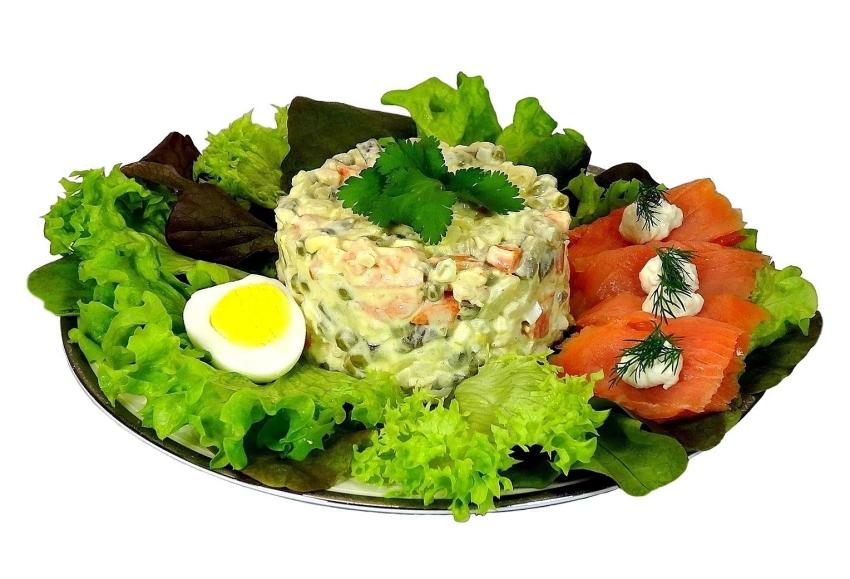- Read offline
- Access all content
- Use the in-app Map to find sites, and add custom locations (your hotel...)
- Build a list of your own favourites
- Search the contents with full-text search functionality
- ... and more!
salade russe
or salade Olivier

Said to have been invented in Russia at the Hermitage Restaurant in Moscow in the 1860s by Franco-Belgian chef Lucien Olivier. It included diced smoked duck, lettuce, caviar, pheasant, beef tongue, crayfish and capers in dressing in a mayonnaise made with French wine vinegar, mustard, or olive oil from Provence (the secret recipe died with him).
It soon became wildly popular at the Hermitage. While Olivier took great care to keep the recipe for the dressing secret, Ivan Ivanov determined to make his own version, sneaked into the kitchen while Olivier was out and saw the ingredients he used for his dressing. He started serving his version of the recipe but everyone agreed it wasn’t quite right. Then he sold it.

On the other hand this famous recipe in the Cuisine classique of 1856, calling for diced potatoes, beetroot, celeriac, dill pickles, cornichons, anchovy filets and capers, combined in a sauce of mustard mayonnaise with grated horseradish, with the possible addition of mâche.
These days there are a thousand variations, with or without meat or seafood (few as lavish as the original recipe, though!), and often with different name; in France it’s aslo called macédoine.
Another version, salade piémontaise, dates from a visit made by Tsar Nicholas II to King Victor Emmanuel III at the royal castle of Racconigi in 1909, in Piemonte, Italy.
The cooks of the Russian court passed on the recipe to their Piedmontese counterparts, who, however, used the ingredients available in the royal vegetable gardens: carrots, peas, beans and potatoes, and used cream instead of mayonnaise. When it crossed over to France, French chefs added tomates, cornichons et cooked ham, which is the version made today.
Images by Urbain Dubois, Émile Bernard, VladiMens

